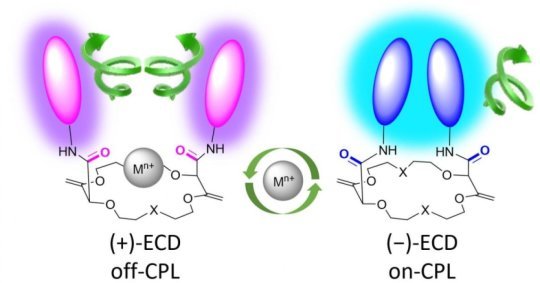Molecular switch detects metals in the environmentResearchers from UNIGE have developed a new type o
Molecular switch detects metals in the environmentResearchers from UNIGE have developed a new type of chemical sensor capable of detecting the presence of metals in the environmentAn international team, led by researchers from the University of Geneva (UNIGE), Switzerland, has designed a family of molecules capable of binding to metal ions present in its environment and providing an easily detectable light signal during binding. This new type of sensor forms a 3D structure whose molecules are chiral, that is to say structurally identical but not superimposable, like an image and its reflection in a mirror, or like the left and right hands. These molecules consist of a ring and two luminescent arms that emit a particular type of light in a process called Circular Polarized Luminescence (CPL), and selectively detect ions, such as sodium. This research can be read about in Chemical Science.“The luminescent arms of our molecules function like light bulbs that light up or turn off depending on the presence of a positively charged ion, a metal cation,” explains Jérôme Lacour, Dean of the Faculty of Science at UNIGE and Ordinary Professor in the Department of Organic Chemistry. These molecules can be compared to small locks: when they are ready to operate and detect the presence of metals, they emit a particular type of light (circularly polarized). When a metal ion is inserted, it acts on them like a key, the lock geometry changes and the light disappears.Read more. -- source link
Tumblr Blog : materialsscienceandengineering.tumblr.com
#materials science#science#molecules#metals#environment#sensors#luminescence
